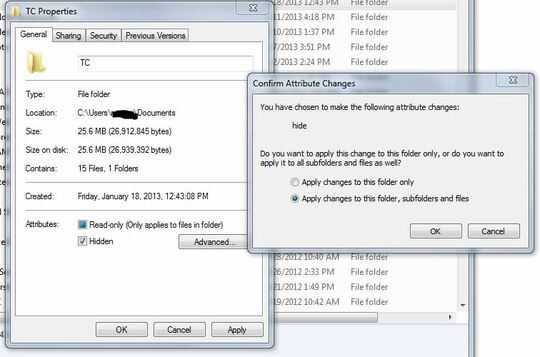2
0
Before upgrading to Windows 8 I did several backups to a secondary drive and specifically to this folder: E:\Backups\Keepers\2013.02.14 Before Windows 8. The backup folder included Acronis True Image Home 2010 backups and a number of xcopy's.
When I installed Windows 8 I wiped the two partitions on my SSD drive in favour of one partition for Windows 8 and proceeded with installation without a problem. As expected the secondary drive changed from E: to D: because the SSD drive now has one, not two, partitions.
Today when I went to restore files I could not see the D:\Backups\Keepers\2013.02.14 Before Windows 8 folder. Heart sunk! After investigation I found the 2013.02.14 Before Windows 8 folder had System and Hidden attributes. I did not set those attributes.
This leads me to the following questions:
- What might have turned on System & Hidden attribute?
- When I removed the attributes from 2013.02.14 Before Windows 8 folder one of two sub folders had the same issue. Why?
- I found the folder had these attributes by dir .tib /s. Why did dir find show these files given they were is hidden & system folders?

Maybe I'm missing something, what's wrong with a folder having System & Hidden switched on? – Toby Allen – 2015-10-18T16:29:31.323
@TobyAllen they were turned on without my knowledge. – Tim Murphy – 2015-10-18T23:28:29.453
For me
dirdoes not show hidden files by default, yet it shows everything withdir /aas it's supposed to do. – Alexey Ivanov – 2013-02-28T19:18:59.070I saw Hidden attribute added to folders and files that start with
.if a network folder accessed from Windows where the host is a Linux system. On Linux files that start with.are considered hidden, therefore hidden attribute is added when you view it from Windows. – Alexey Ivanov – 2013-02-28T19:21:10.943